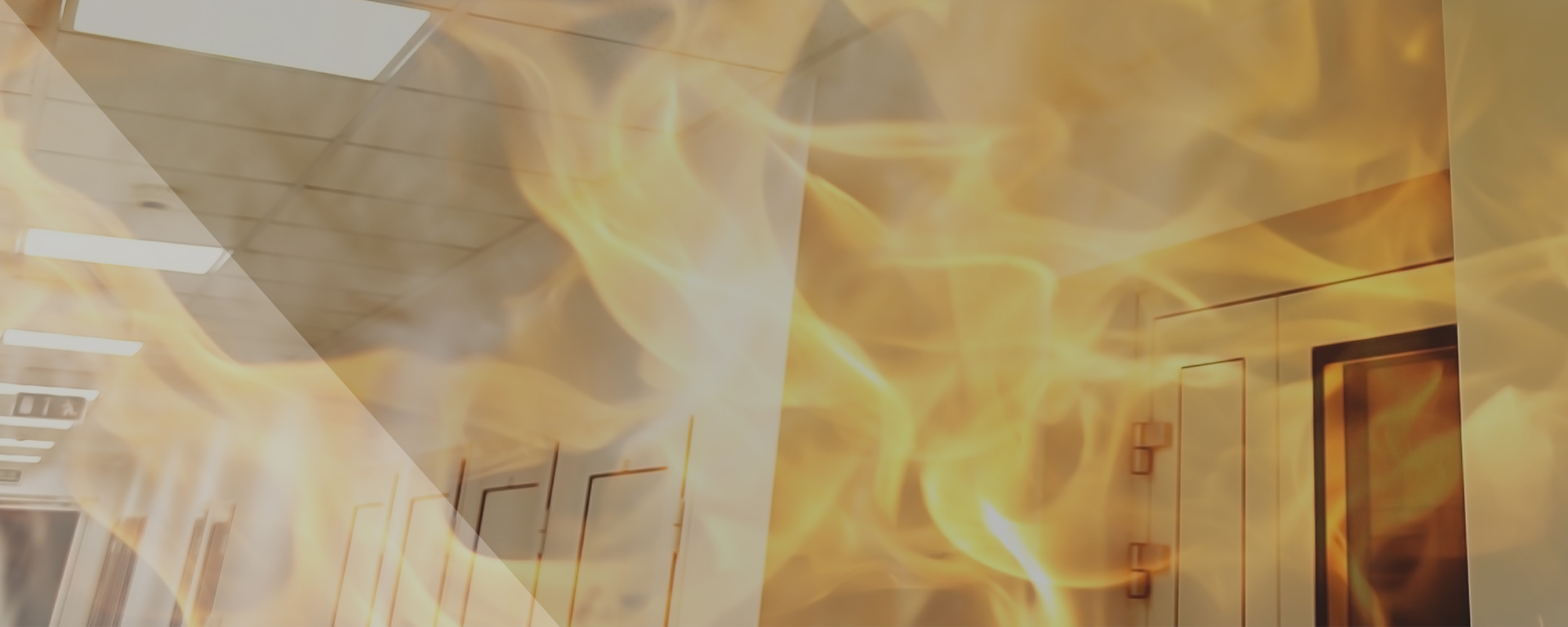
Fire Door Safety Week
This week is Fire Door Safety Week, which aims to raise awareness of the critical role that correctly fitted and functioning Fire Doors play in safeguarding lives and property in the event of a fire. At Sircle, we regularly carry out Fire Door Surveys across the UK on a wide range of buildings, including hospitals, schools, offices, and commercial and typically, alarmingly, on average, circa 75% of all doors we survey have issues that would prevent them from restricting the spread of Fire and smoke which could lead to loss of property and life. Set out below are the legal requirements, functions of a Fire Door, and the end-to-end advice and support Sircle can provide – reporting on action needed and managing works to ensure the buildings are safe and compliant with the legislation.
What are the legal requirements?
The Grenfell Tower Inquiry has reinforced the importance of Fire Doors. In the Phase 1 report, it stated that “Fire doors play an essential role in preventing or inhibiting the spread of smoke and toxic gases and in preserving the effective compartmentation of buildings.” It also highlighted that the fire doors did not, through damage and/or disrepair, act in the way that they should to prevent smoke and gases from spreading. This has reinforced the existing legislation and led to new requirements.
1. The Regulatory Reform (Fire Safety) Order 2005
This places a duty on Responsible People to undertake ‘general fire precautions’. This means in all premises, subject to the order, that measures must be taken to secure and ensure the means of escape can be safely and effectively used and measures are taken to reduce the risk of Fire spread on the premises. Fire Doors are integral to these requirements.
Article 17 of the order makes it a legal requirement that Fire resisting doors and escape doors for all buildings (other than domestic housing are correctly installed and maintained in an efficient state, in working order, and in good repair, for more information click here.
2. Fire Safety (England) Regulations 2022
Regulation 10 made it a legal requirement from 23 January 2023 for all multi-occupied residential buildings in England with storeys over 11 metres in height to:
- Undertake quarterly checks of all fire doors (including self-closing devices) in the common parts.
- Undertake – on the best endeavour basis – annual checks of all flat entrance doors (including self-closing devices) that lead onto a building’s common parts.
Click here for more information.
The law places the responsibility on whoever has day-to-day control of premises, i.e., the responsible person, to take steps to ensure that regular inspections are carried out and that any necessary repairs or replacements are made promptly. Failure to comply with the legislation could result in enforcement action by the fire and rescue service, including fines or even imprisonment, on top of the risk to life and property.
The Crucial Functions of Fire Doors
- Fire Containment: Fire doors are an essential part of forming a Fire Compartment to slow down the spread of Fire. They act as barriers, preventing flames and smoke from advancing rapidly, giving occupants more time to escape.
- Life Protection: Fire doors restrict the spread of Fire and smoke to support a safe evacuation by reducing exposure to harmful fumes and flames.
- Property Preservation: Fire doors also protect your valuable assets. They minimise the financial and emotional impact of fire-related damage to individuals and businesses.
Why Choose Sircle
- Expertise and Assurance: Our team comprises of experienced and qualified staff who specialise in Fire Safety Surveys. Sircle works closely with clients throughout each stage of the survey – providing clear advice to ensure the legislative requirements are understood, producing survey reports that set out the action needed, and project manage works to a successful completion.
- Regulatory Compliance: We have a detailed working knowledge of fire safety legislation and the Building Regulations, ensuring that we can provide clear advice on requirements. We also carry out a Fire Compartmentation assessment to identify where Fire Doors are required, which often highlights that not all existing Fire Doors need to be, ensuring clients avoid unnecessary spend.
- Independent approach: We provide a professional opinion on existing fire doors and only recommend replacement of fire doors if repairs are uneconomical or if we feel the doors cannot perform as intended.
- Comprehensive Assessments and Advice: Our Fire Door Surveys follow a structured step-by-step approach using mobile-based technology to generate data and reports that inform the advice we provide on the next steps
- Peace of Mind: We provide clarity on the actions needed to ensure your building is compliant with legislation. This clarity prioritises lives and property and maximises investment to avoid issues escalating.
- Procurement and Project Management support: Following agreement of the next steps, we can provide support procuring repairs and replacements and project management to ensure the successful completion of works and signed off. We recommend that UKAS-accredited contractors are used to undertake fire safety work, and this is followed up with an audit to sign off the works.
Conclusion
Fire doors are a crucial element of Fire Safety with clear legal requirements for regular inspection. A detailed survey and report can provide clarity on actions needed to ensure that the legal requirements and maximise investment.
Sircle has a range of Fire Safety surveys to ensure you remain compliant, click here to find out more, or speak to us and we would be happy to provide some advice.
By Anthony Walker FRICS MIFireE, Director at Sircle


